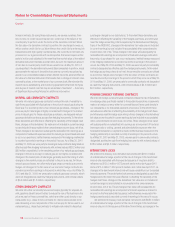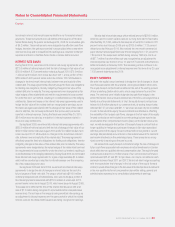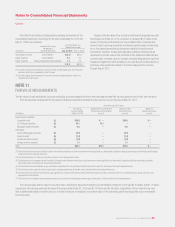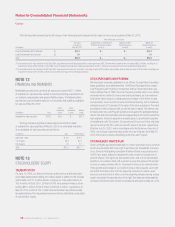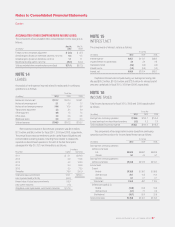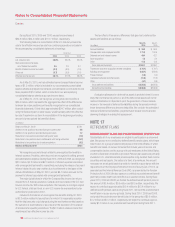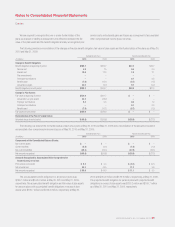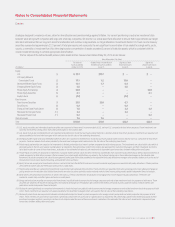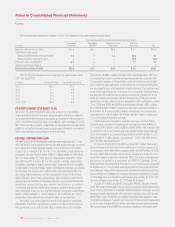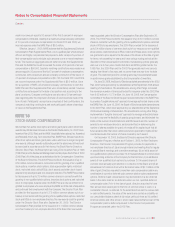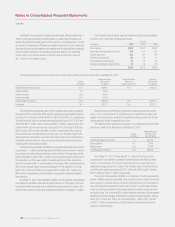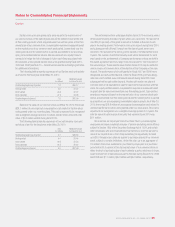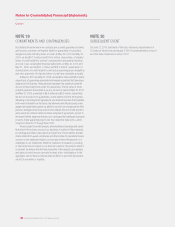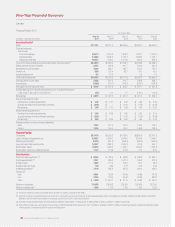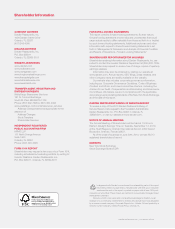Red Lobster 2010 Annual Report Download - page 64
Download and view the complete annual report
Please find page 64 of the 2010 Red Lobster annual report below. You can navigate through the pages in the report by either clicking on the pages listed below, or by using the keyword search tool below to find specific information within the annual report.
Fair Value Measurements Using Significant Unobservable Inputs (Level 3)
Private Equity Private Equity Energy & Real Estate Real Asset
(in millions) Partnerships Securities Public Sector Private Funds Total
Beginning balance at May 31, 2009 $17.8 $0.1 $2.9 $ 8.7 $29.5
Actual return on plan assets:
Relating to assets still held at the reporting date 4.4 – 1.3 (0.5) 5.2
Relating to assets sold during the period – – – (0.1) (0.1)
Purchases, sales, and settlements 0.7 – – 1.1 1.8
Transfers in and/or out of Level 3 – – – – –
Ending balance at May 30, 2010 $22.9 $0.1 $4.2 $ 9.2 $36.4
62 DARDEN RESTAURANTS, INC. | 2010 ANNUAL REPORT
Notes to Consolidated Financial Statements
Darden
The following benefit payments are expected to be paid between fiscal
2011 and fiscal 2020:
(in millions) Defined Benefit Plans Postretirement Benefit Plan
2011 $10.6 $1.0
2012 10.1 0.8
2013 10.5 0.9
2014 10.9 1.0
2015 11.4 1.2
2016–2020 66.0 8.5
POSTEMPLOYMENT SEVERANCE PLAN
We accrue for postemployment severance costs in our consolidated
financial statements and recognize actuarial gains and losses related to
our postemployment severance accrual as a component of accumulated
other comprehensive income (loss). As of May 30, 2010 and May 31, 2009,
$3.1 million and $4.5 million, respectively, of unrecognized actuarial losses
related to our postemployment severance plan were included in accumulated
other comprehensive income (loss) on a net of tax basis.
DEFINED CONTRIBUTION PLAN
We have a defined contribution plan covering most employees age 21 and
older. We match contributions for participants with at least one year of service
up to six percent of compensation, based on our performance. The match
ranges from a minimum of $0.25 to $1.20 for each dollar contributed by the
participant. The plan had net assets of $553.2 million at May 30, 2010 and
$477.9 million at May 31, 2009. Expense recognized in fiscal 2010, 2009
and 2008 was $1.2 million, $2.0 million and $1.3 million, respectively.
Employees classified as “highly compensated” under the IRC are not eligible
to participate in this plan. Instead, highly compensated employees are eligible
to participate in a separate non-qualified deferred compensation plan. This
plan allows eligible employees to defer the payment of part of their annual
salary and all or part of their annual bonus and provides for awards that
approximate the matching contributions and other amounts that participants
would have received had they been eligible to participate in our defined
contribution and defined benefit plans. Amounts payable to highly compen-
sated employees under the non-qualified deferred compensation plan totaled
$158.1 million and $132.1 million at May 30, 2010 and May 31, 2009,
respectively. These amounts are included in other current liabilities.
The defined contribution plan includes an Employee Stock Ownership
Plan (ESOP). This ESOP originally borrowed $50.0 million from third parties,
with guarantees by us, and borrowed $25.0 million from us at a variable
interest rate. The $50.0 million third party loan was refinanced in 1997 by a
commercial bank loan to us and a corresponding loan from us to the ESOP.
Compensation expense is recognized as contributions are accrued. In addi-
tion to matching plan participant contributions, our contributions to the plan
are also made to pay certain employee incentive bonuses. Fluctuations in our
stock price impact the amount of expense to be recognized. Contributions to
the plan, plus the dividends accumulated on unallocated shares held by the
ESOP, are used to pay principal, interest and expenses of the plan. As loan
payments are made, common stock is allocated to ESOP participants. In fiscal
2010, 2009 and 2008, the ESOP incurred interest expense of $0.1 million,
$0.3 million and $0.9 million, respectively, and used dividends received of
$1.6 million, $1.8 million and $4.4 million, respectively, and contributions
received from us of $0.2 million, $2.4 million and $0.0 million, respectively,
to pay principal and interest on our debt.
ESOP shares are included in weighted-average common shares
outstanding for purposes of calculating net earnings per share. At May 30,
2010, the ESOP’s debt to us had a balance of $9.8 million with a variable rate
of interest of 0.65 percent and is due to be repaid no later than December
2014. The number of our common shares held in the ESOP at May 30, 2010
approximated 5.6 million shares, representing 3.7 million allocated shares
and 1.9 million suspense shares.
At the end of fiscal 2005, the ESOP borrowed $1.6 million from us at a
variable interest rate and acquired an additional 0.05 million shares of our
common stock, which were held in suspense within the ESOP at May 29, 2005.
The loan, which had a variable interest rate of 0.65 percent at May 30, 2010,
is due to be repaid no later than December 2018. The shares acquired under
this loan are accounted for in accordance with FASB ASC Subtopic 718-40,
Employee Stock Ownership Plans. Fluctuations in our stock price are recognized
as adjustments to common stock and surplus when the shares are committed
to be released. These ESOP shares are not considered outstanding until they
are committed to be released and, therefore, have been excluded for purposes
of calculating basic and diluted net earnings per share at May 30, 2010. The
fair value of these shares at May 30, 2010 was $1.9 million.
As part of the RARE acquisition, we assumed RARE’s employee benefit
plans. We merged these plans into our existing employee benefit plans during
fiscal 2009. As of the date of acquisition, RARE provided its employees who met
minimum service requirements with retirement benefits under a 401(k) plan
(RARE Plan). Under the RARE Plan, eligible employees were eligible to make
contributions of between 1 percent and 20 percent of their annual compensation
to one or more investment funds. Officers and highly compensated employees
did not participate in the RARE Plan. Quarterly matching contributions were
The following table presents the changes in Level 3 investments for the defined benefit pension plans.


